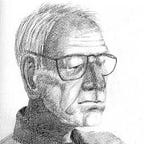Munich Street Art
Shortly before departing for my winter nesting grounds in Florida, I completed a story on the burgeoning St. Petersburg Street Art scene. No doubt much of it will be over-painted and new walls will be made available for this growing trend in outdoor murals. Now back in my summer nesting grounds of Bavaria, I am eager to explore how street art is faring on this side of the Atlantic. An outing to art works under the Peace Angel was also meant as an antidote to recent depressing news. In these troubled times of gun violence, soccer hooliganism, mass immigration conflicts, Brexit . . . I headed for an uplifting moment in the graffiti paneled tunnel under the Peace Angel.
My small farming village in lower Bavaria has no mural art. It has a we-don’t-do-that attitude. The “downtown” reflects a landscape of buildings in a few shades of off-white earth-tones. On the bright side, the walks and parks are dotted with sculptures and roadside flower beds. By comparison, nearby Munich in upper Bavaria is one of Germany’s centers for graffiti and mural art. It sprang up following in New York City’s footsteps back in 1985 with spray paintings of subway trains. Now with government permission and some subsidies mural art is encouraged and promoted.
Unlike my laid-back Florida bike touring with an ever present smartphone camera, collecting images of Munich’s street art is a more daunting task. It is much too large of a city and too dense to cover by bike or on-foot given the narrow streets, underpasses, tunnels, and tree-lined boulevards. Catching sunlight at the right angle and lacking the open space for wide-angle views adds to the photography problem. Getting from place to place by subway limits what you can see on the way. Rather than attempting to duplicate the open-spaced-sunshine-state collection, I can share only a glimpse of the Munich art scene from a few short walks along the banks of River Isar, the tunnel under the Peace Angel, the former slaughter-house area of Tumblingerstrasse, and a home mural alongside a satellite dish. In addition, a link to Google Images on Munich Street Art provides an overview of more than 700 art works.
Street art takes many forms generally on public spaces as self-expression. During WWII American soldiers scribbled the words Kilroy was here as an attention grabbing craze on many walls in Europe. For some the word graffiti has come to mean an artistic expression on public structures or space from tagging (stylized names or initials) on walls to highly valued paintings by Banksy to huge projects by Cristo like the covering of the Reichstag (German Parliament) building. People have organized knitting works to cover portions of statues, overprinting paper currency by the Money Liberation Front in England, for counterculture propaganda, stenciling in multi-colors to make a quick getaway, and my favorite, pissing, a high-pressure spray painting to get at inaccessible places.
Full disclosure: My son and I are former graffiti artists. In 1991 we decorated the marina wall with our boat logo on the Isle of Faial in the Azores. This practice in Horta dates back to New England whalers in the 18th century.
During my walk to the Peace Angel, I was struck by the photo exhibition on the entire front wall of the block-long Haus der Kunst (art) museum. Although not a traditional mural painting, but nonetheless a form of graffiti in my mind. The Christian Botanski installation of hundreds of eyes representing members of the Red Orchestra (Nazi resistance movement) is a warning to today’s society not to repeat mistakes of the past. Given the current news environment, we desperately need the warning.
